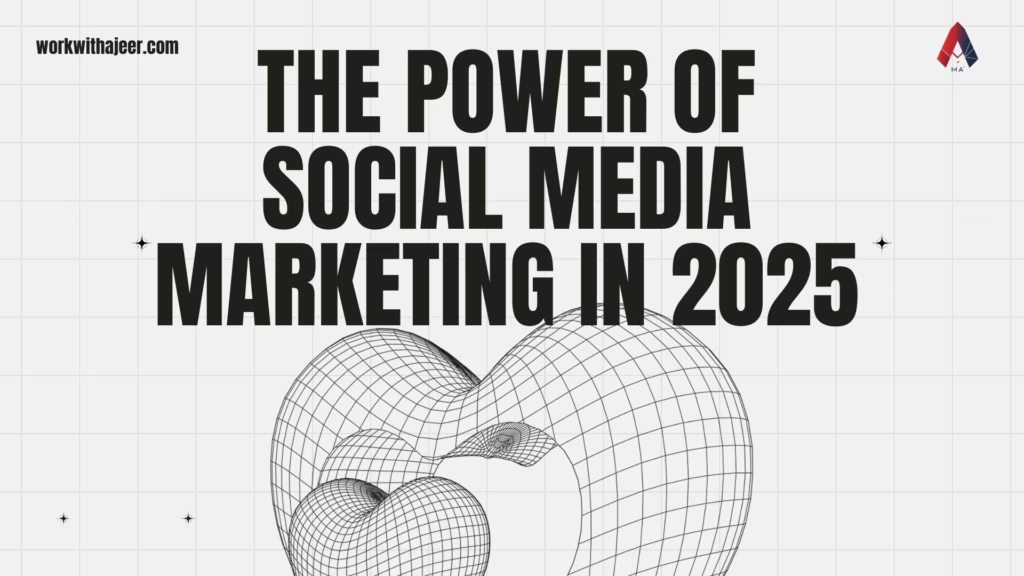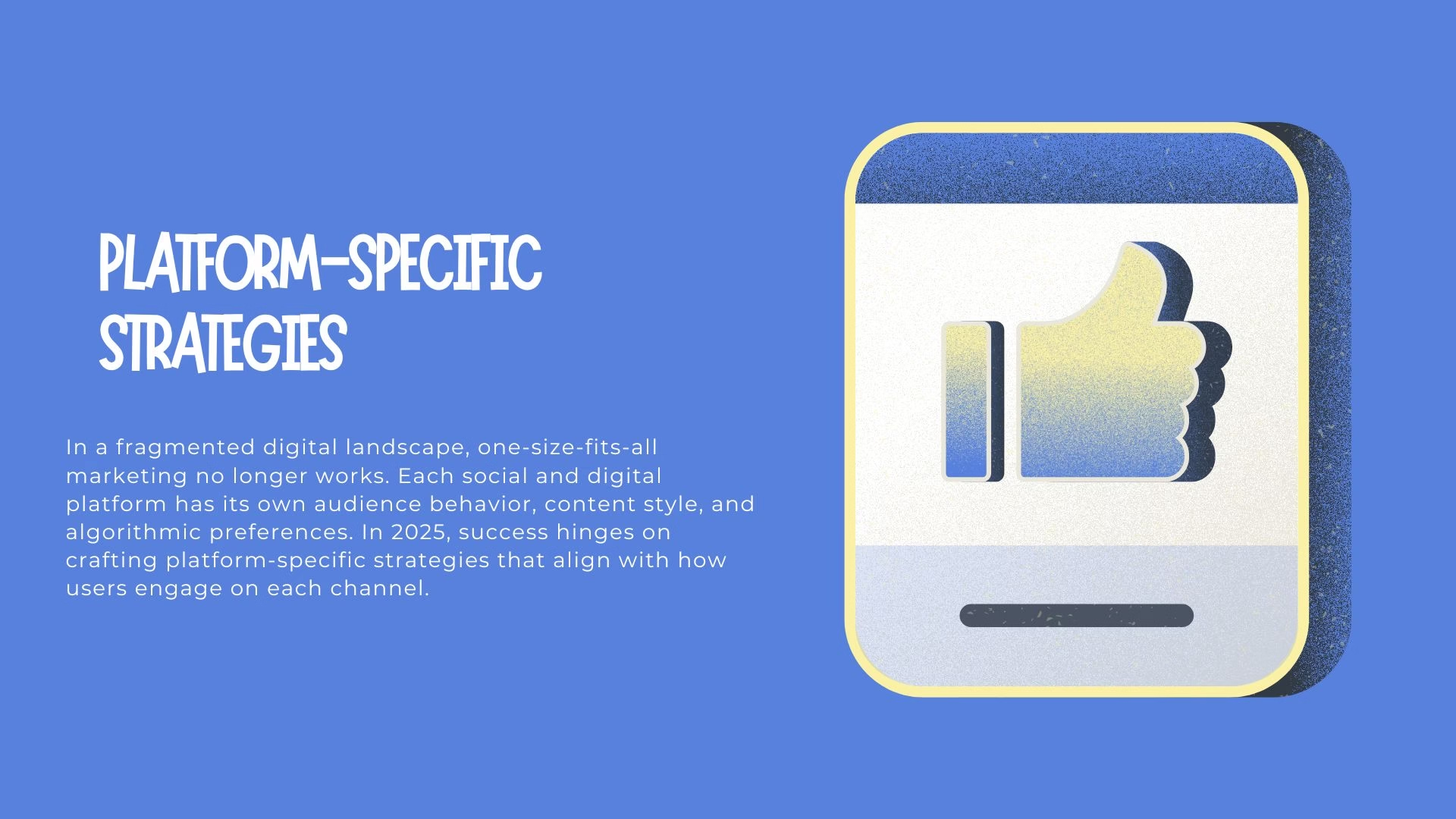In 2025, social media has evolved from a casual communication tool into one of the most powerful marketing ecosystems in the digital landscape. With over 5 billion users actively engaging across platforms, the influence of social media on consumer behavior, brand development, and business success is unprecedented. From AI-powered content generation to hyper-personalized ad targeting, the power of social media marketing (SMM) in 2025 lies in its ability to create meaningful, real-time interactions between brands and audiences.
This comprehensive article explores the transformative impact of social media marketing in 2025, including key trends, technologies, strategies, platforms, and the future direction of this dynamic field.
1.The Current Social Media Landscape
In 2025, social platforms are shaping the digital world with unprecedented reach, innovation, and cultural influence.It has transitioned from being merely a digital interaction space to becoming the central nervous system of global communication, commerce, and culture. With over 5.2 billion active users worldwide—more than half the planet—social media is now essential for how people discover information, engage with brands, make purchase decisions, and even form social identities.
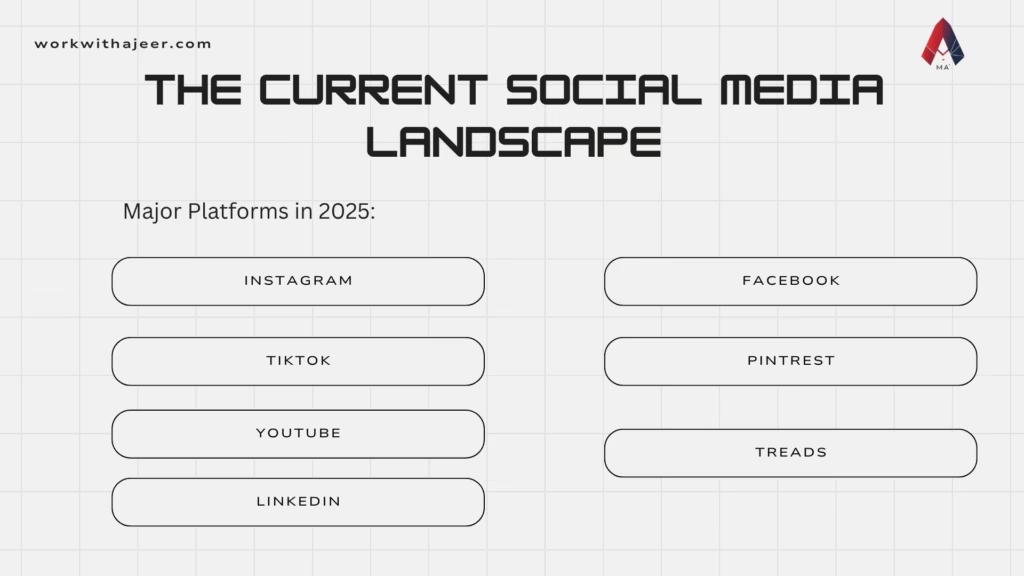
Platform Diversification
Unlike earlier years where Facebook and Twitter dominated the social media marketing stage, today’s users are scattered across a broad ecosystem of platforms—each serving different audience needs, content formats, and purposes.
Major Platforms in 2025:
Instagram & Threads: Visual-first storytelling, influencer culture, and lifestyle branding continue to thrive here. Instagram’s Reels and Threads’ conversational features remain vital for youth engagement and trend culture.
TikTok: Still the king of viral, short-form video. TikTok in 2025 goes beyond dance trends to include educational content, brand storytelling, and even professional development clips.
YouTube: The go-to platform for long-form content, tutorials, vlogs, and creator-driven channels. In the fast-paced world of bite-sized content, YouTube Shorts stands toe-to-toe with TikTok.
LinkedIn: Still central to B2B engagement and professional growth, the platform has evolved in 2025 into a learning and micro-content ecosystem with AI-powered updates and real-time event hosting..
Facebook: While its user growth has plateaued, Facebook remains strong for older demographics, local communities, and small business promotion through Facebook Marketplace and Groups.
Snapchat: A top contender among Gen Z and Gen Alpha, thanks to its focus on AR lenses, ephemeral content, and location-based interaction.
Pinterest: This visual search platform is proving essential for brand visibility and online shopping, thriving in specialized categories like decor, apparel, and DIY projects.
Emerging platforms, such as BeReal AI (authentic, real-time sharing) and Meta’s Horizon Worlds (VR-based interaction), are also gaining traction as users seek new, immersive experiences.
2. The Evolution of Social Media Marketing
From Awareness to Full-Funnel Strategy
SMM in social media marketing 2025 is no longer limited to generating brand awareness. Today, it serves the entire marketing pipeline, starting with customer acquisition.
Lead nurturing
Sales conversion
Customer support
Loyalty and advocacy
Social social media marketing provide data-driven insights, retargeting capabilities, and e-commerce integrations that make full-funnel strategies seamless and measurable.
AI and Automation in SMM
AI tools like ChatGPT, Jasper, and Canva’s AI features allow brands to:
Generate on-brand captions and visuals
Predict content performance
Customize user experiences
Automate customer service via chatbots
Manage campaigns with minimal manual input
3.Influencer Marketing and the Creator Economy
In social media marketing 2025, successful digital strategies are built around influencer marketing—not just enhanced by it. The rise of the creator economy has dramatically shifted how brands connect with consumers, moving from traditional celebrity endorsements to authentic, community-driven advocacy.
Influencer marketing has evolved into a sophisticated, data-backed, multi-billion-dollar industry where creators—regardless of their follower size—play a vital role in driving awareness, conversions, and brand loyalty.
The Creator Economy in 2025
The term creator economy refers to the ecosystem of independent content creators—vloggers, educators, streamers, artists, gamers, podcasters, and influencers—who earn income through social platforms, brand deals, paid subscriptions, digital products, and fan support.
Artificial intelligence is fueling a new wave of brand ambassadors—virtual influencers and voicebots with growing appeal.
Platforms like TikTok, YouTube, and Instagram offer direct monetization tools, reducing creators’ dependency on brand deals alone.
-
Platform-Specific Strategies
Instagram & Threads
Focus: Visual storytelling, product discovery, short-form Reels
2025 Features: Enhanced in-app shopping, AI-curated feeds, subscription-based content
TikTok
Focus: Viral trends, short-form videos, cultural influence
2025 Features: Shoppable livestreams, predictive trend analysis, Creator Marketplace expansion
YouTube
Focus: Long-form content, tutorials, vlogging, education
2025 Features: YouTube Shorts monetization, live commerce, multilingual dubbing via AI
Focus: B2B networking, thought leadership, career branding
2025 Features: AI-powered job matching, branded audio rooms, newsletter expansion
Focus: Communities, local marketing, multigenerational reach
2025 Features: Meta Pay integration, 3D product previews, interest-based groups
Snapchat & AR Platforms
In 2025, marketers are embracing custom AR overlays, digital fitting rooms, and geo-targeted promotions delivered instantly.
-
Personalization and Data-Driven Marketing
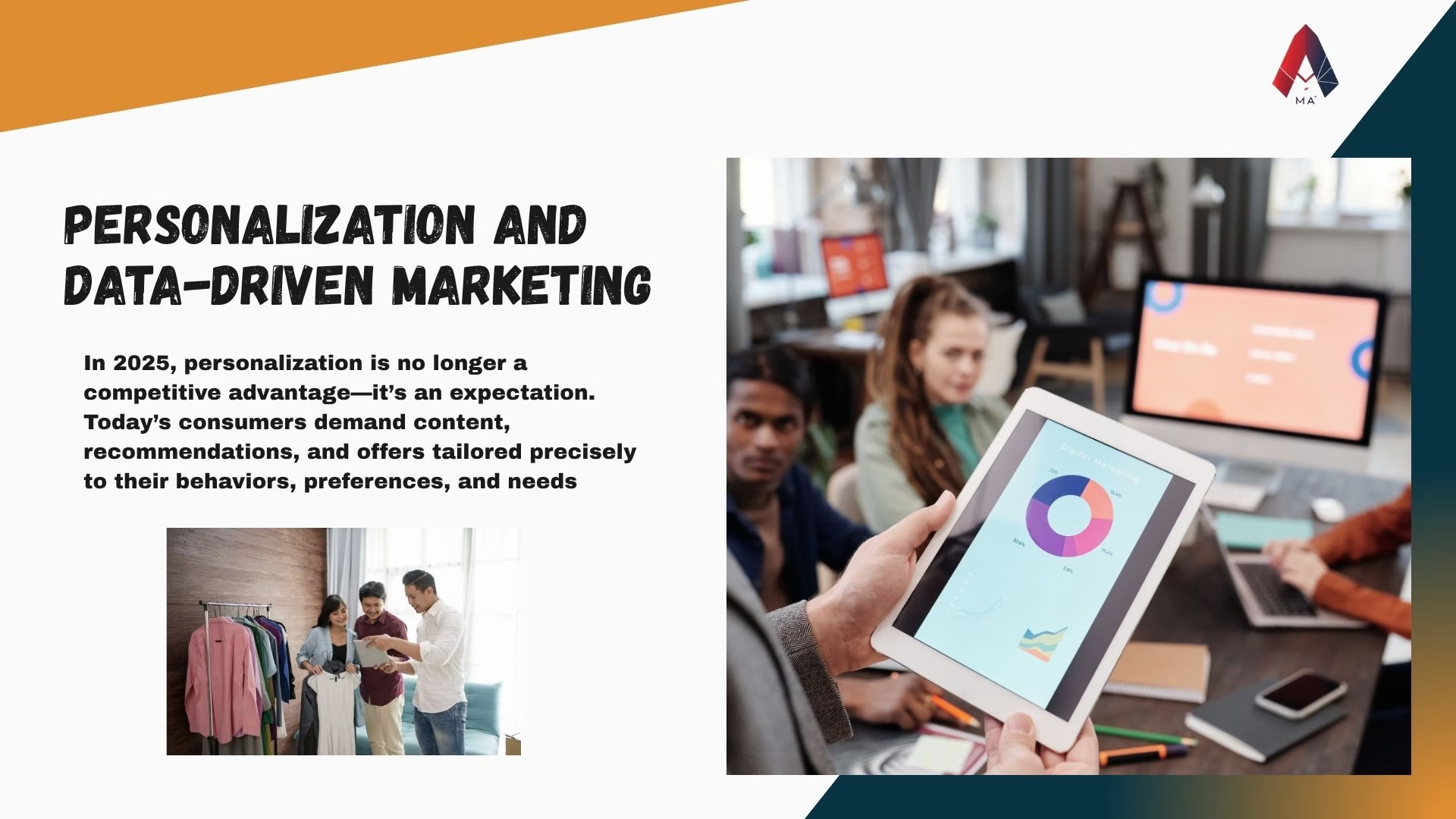
With so much content competing for attention in social media marketing 2025, personalization is no longer optional. Audiences engage with brands that deliver relevant, behavior-driven messaging. Thanks to the rapid advancement of artificial intelligence (AI), machine learning, and big data analytics, personalization in social media marketing has moved from basic demographic targeting to hyper-personalized, predictive engagement.
Data-driven marketing empowers brands to not only understand their audience but to anticipate their next move, crafting dynamic campaigns that feel intuitive and human—despite being powered by advanced algorithms.
Why Personalization Matters in 2025
Surrounded by nonstop marketing noise, today’s consumer only engages with content that feels personal and purposeful.
Benefits of Personalization:
Increased engagement: Personalized posts get 2.5x more interaction than generic ones.
Higher conversions: Tailored product suggestions lead to improved click-through and purchase rates.
Better customer retention: Personalized messaging builds emotional connections and long-term loyalty.
Stronger ROI: Every dollar spent on personalized ads yields a higher return than mass campaigns.
A recent survey found that 78% of users are more likely to buy from a brand that offers personalized experiences across their social media touchpoints.
-
The Rise of Social Commerce
The year social media marketing 2025 marks a tipping point in the global e-commerce landscape, where social commerce has moved from trend to necessity. No longer just a supplementary channel, social media has become a primary shopping destination—seamlessly merging content, community, and commerce into one immersive experience.
Today, more than ever, consumers aren’t leaving their favorite apps to shop; instead, they’re discovering, evaluating, and purchasing products within the social platforms themselves. This shift has fundamentally transformed both consumer behavior and brand strategy.
What is Social Commerce?
social media marketing commerce blends online shopping with social interaction, letting users buy products straight from social media feeds and stories.
. It eliminates the need for users to visit third-party websites by offering end-to-end shopping capabilities—from product discovery to checkout—all within the app.
In 2025, this includes:
In-app storefronts on Instagram, TikTok, and Facebook
Live shopping broadcasts
Shoppable posts and videos
Influencer-led product launches
AR try-ons and interactive product demos
AI-powered shopping assistants via messaging apps
7.Video Dominance and Immersive Experiences
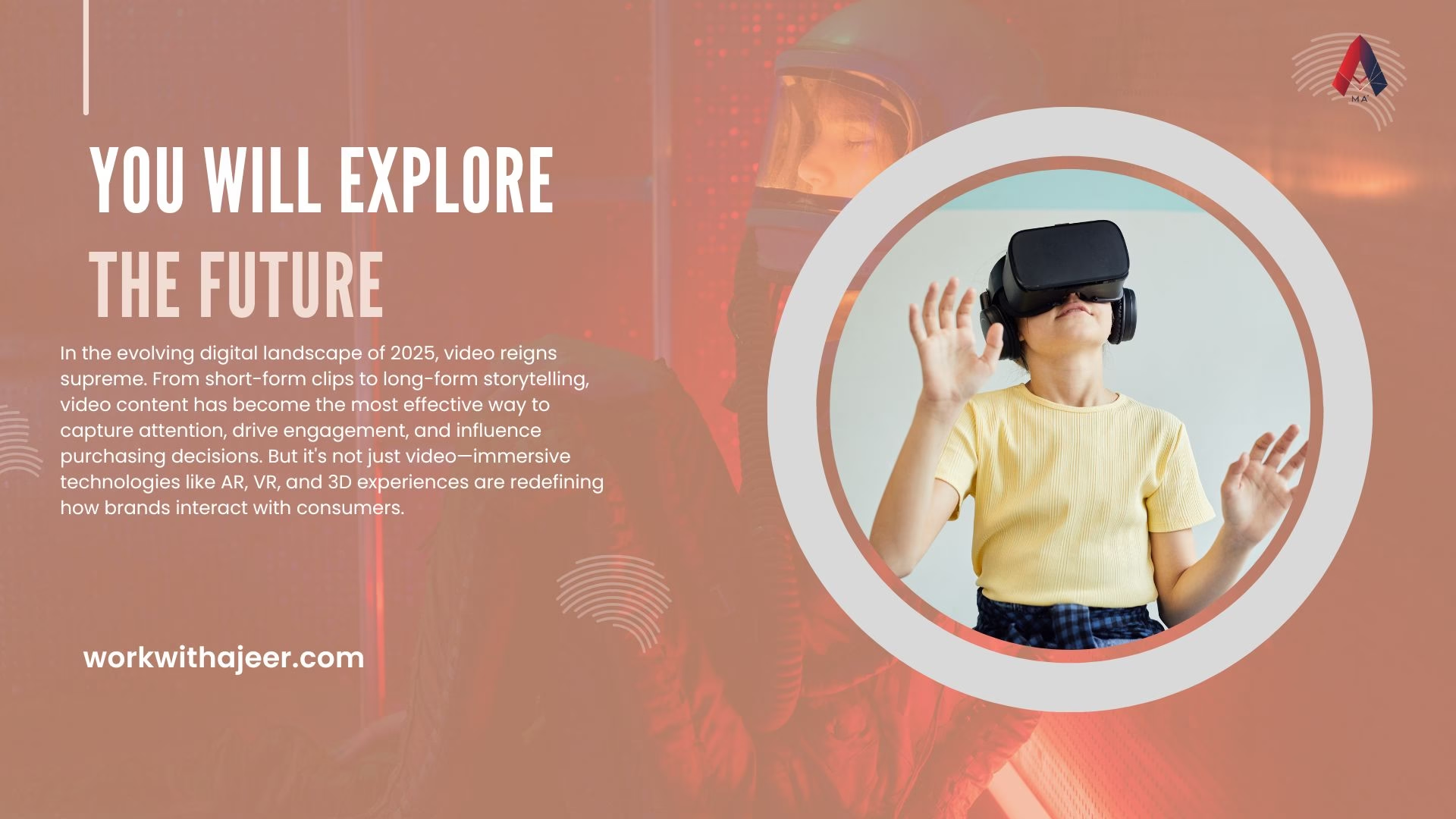
By 2025, social media marketing video content has solidified its position as the most powerful and engaging format across all social media platforms. From 6-second product demos to long-form tutorials, users consume video more than any other type of content—making it an indispensable tool for brands.
But video in 2025 is not just about watching—it’s about interacting, experiencing, and immersing. Fueled by AI, AR, and spatial computing, today’s video strategies combine storytelling with cutting-edge technology to create emotional, memorable brand interactions.
Why Video Reigns Supreme in 2025
85% of social content engagement comes from video.
Platforms prioritize video in algorithms—especially short-form and live content.
With 3x more shares and 2x more conversions, video content proves far more effective than static visuals.
The human brain responds better to visuals—video boosts message retention to 95%, far exceeding the 10% retained from text.
With shrinking attention spans and growing content saturation, video offers a visually rich, story-driven format that captures attention fast and holds it longer.
The Rise of Short-Form Video
Short-form content—under 60 seconds—remains the king of engagement. Across TikTok, Instagram Reels, YouTube Shorts, and Snapchat Spotlight, short-form videos stand out for:
Product teasers
Trend participation
Tutorials or how-tos
Quick brand storytelling
User-generated content (UGC)
Brands are building entire content calendars around bite-sized, vertical video
-
Community Building and Engagement
2025 has witnessed a shift from follower counts to community health metrics: engagement, retention, and loyalty.

How Brands Build Strong Communities:
Hosting live Q&As, AMAs, and webinars
Using private groups (Facebook, WhatsApp Communities)
Collaborating with cause-based initiatives
Promoting user-generated content (UGC) and fan-driven campaigns
Offering exclusive content through subscriptions or early-access passes
9.Brand Transparency and Social Responsibility
In social media marketing 2025, consumers no longer just buy products—they buy values. Social media has become the lens through which people evaluate not only a brand’s offerings, but also its integrity, ethics, and stance on global issues. In this landscape, transparency and social responsibility are not optional—they’re expected.
Thanks to real-time communication and constant scrutiny, social media now serves as both a brand amplifier and a truth detector. Consumers are quick to spot when a brand isn’t being real—and they reward those who are consistently authentic.
The Rise of the Conscious Consumer
Today’s consumers—especially Gen Z and Millennials—are deeply value-driven. They actively seek brands that align with their personal beliefs on social justice, sustainability, mental health, equity, and more.
What matters most to them:
Environmental sustainability and ethical sourcing
Diversity, equity, and inclusion (DEI)
Honest advertising and ethical data use
Labor rights and fair wages
Support for mental health and social causes
Transparency in pricing and practices
-
Future of SMM: What Lies Ahead?
Predictive AI and Real-Time Insights
Marketers will use real-time analytics, NLP sentiment analysis, and AI-generated trends to stay ahead of the curve.
Deep Integration with Wearables
Smartwatches, AR glasses, and even neural interfaces will allow users to interact with social content via gestures or voice commands.
Blockchain and Web3 Integration
With the rise of NFTs, token rewards, and decentralized communities, social media marketing is entering a new era of content monetization and fan-driven loyalty.
Content that provides all information within the platform (no redirects) will dominate. Think interactive brochures, full video demos, and carousel walkthroughs.
Conclusion
The power of social media marketing in 2025 is not just in its reach—it lies in its ability to humanize brands, personalize experiences, and turn audiences into advocates. From AI-powered content creation to immersive storytelling and social commerce, businesses that leverage these tools strategically will thrive in an increasingly digital, connected, and competitive world.
Modern business strategies are built around social media marketing—it’s no longer a choice, but a necessity. Brands that understand and embrace its evolution in 2025 will not only drive conversions but also build lasting customer relationships grounded in trust, relevance, and value.

